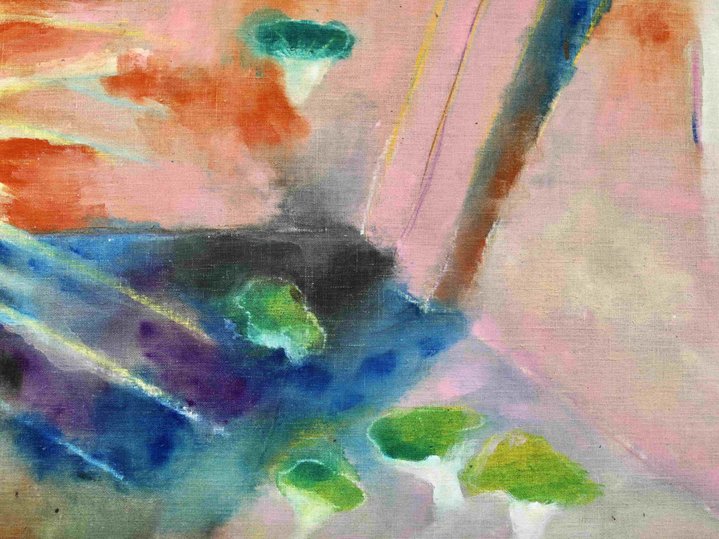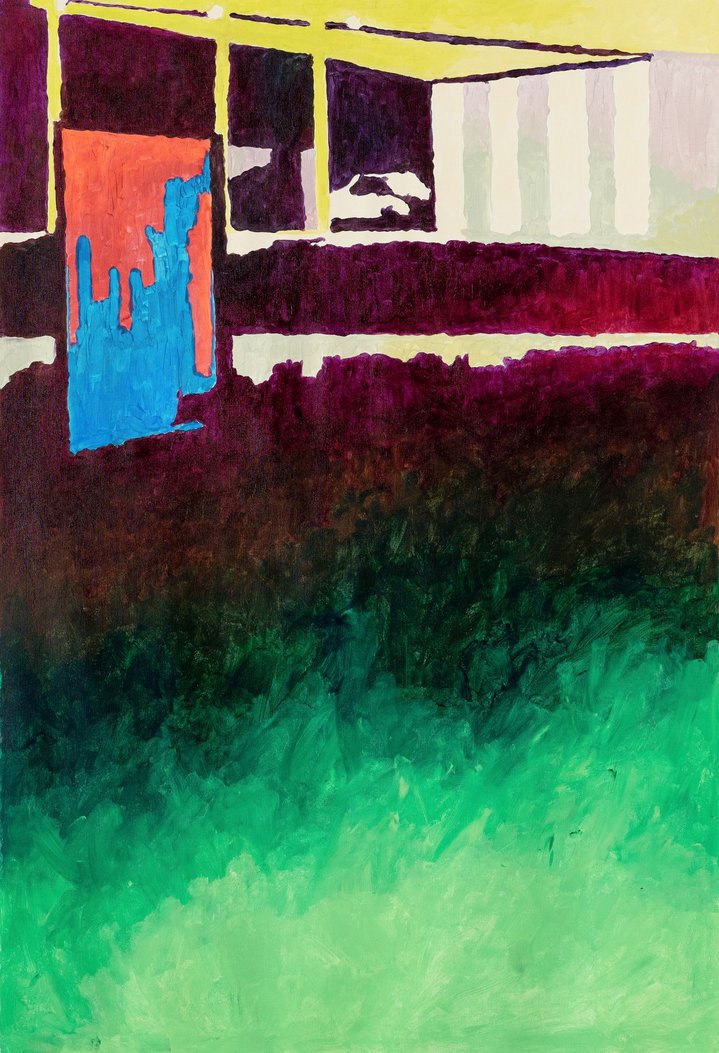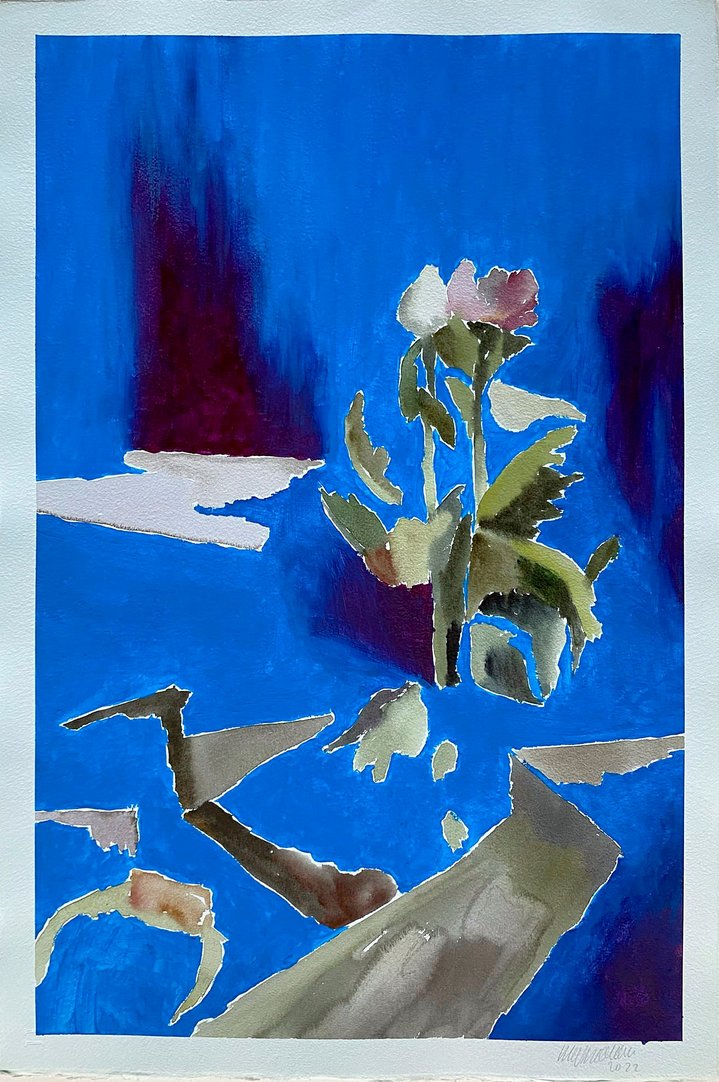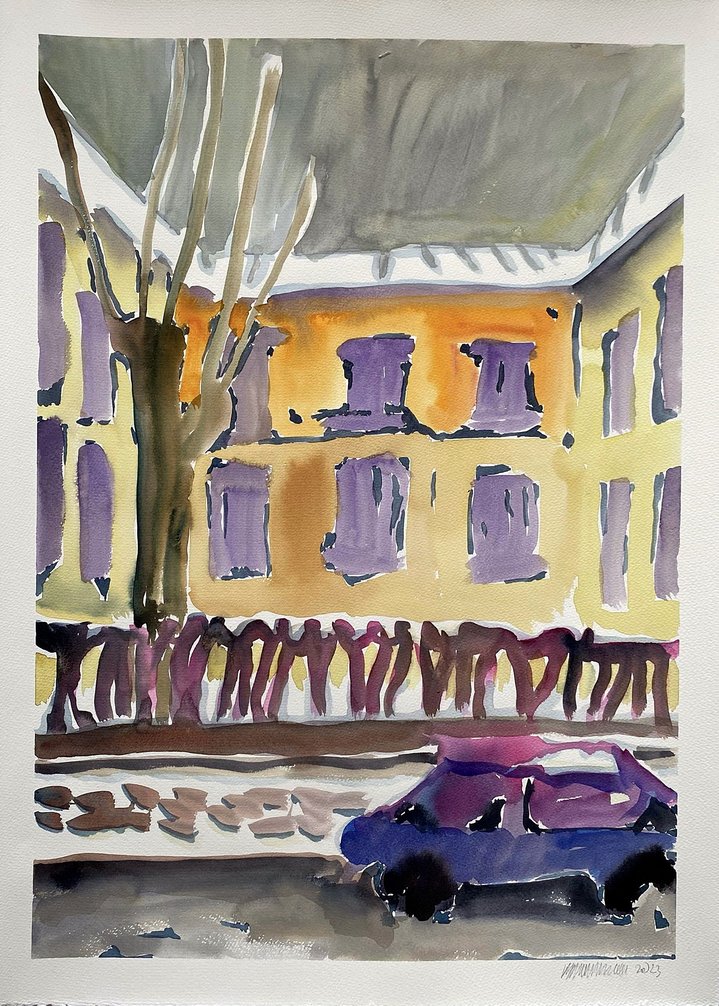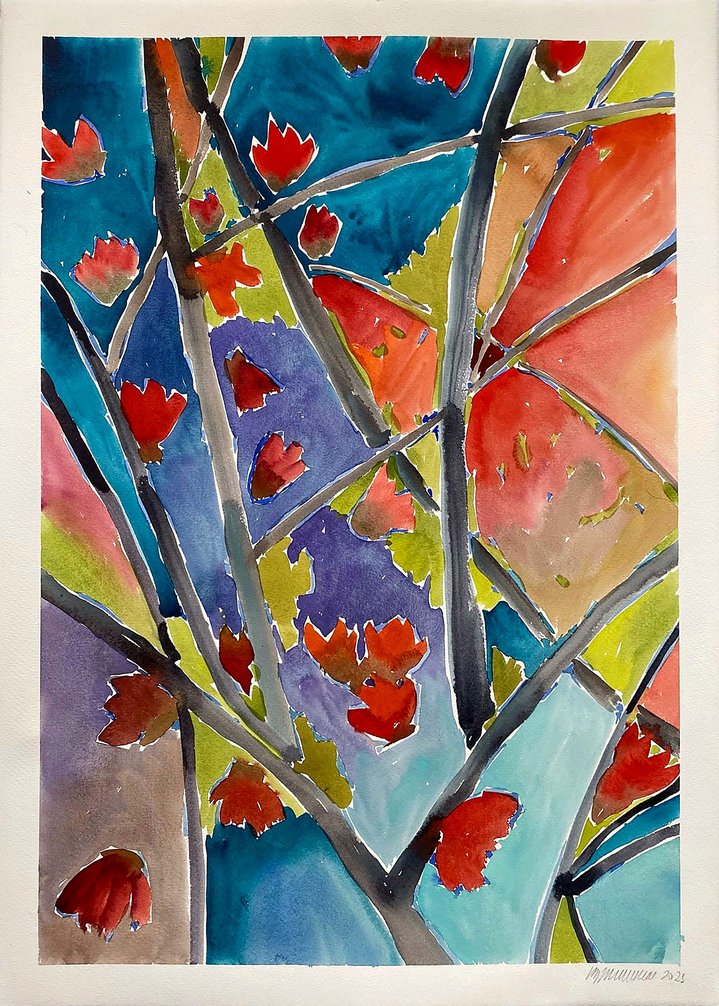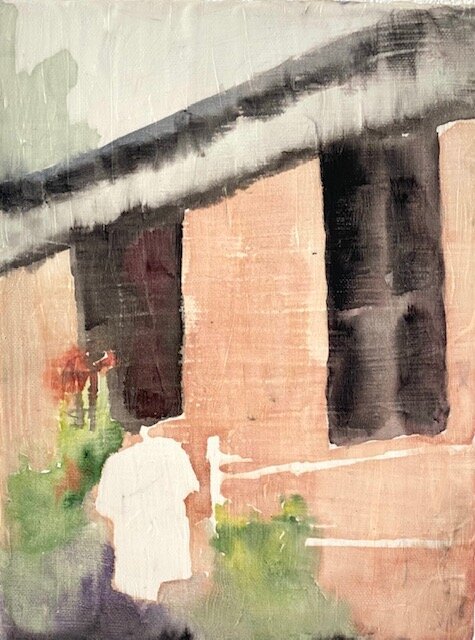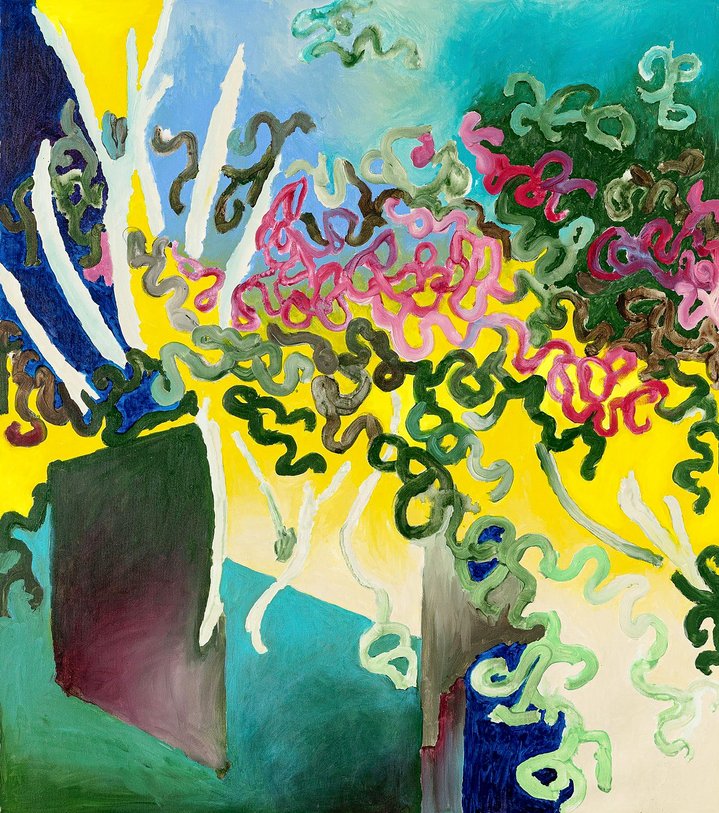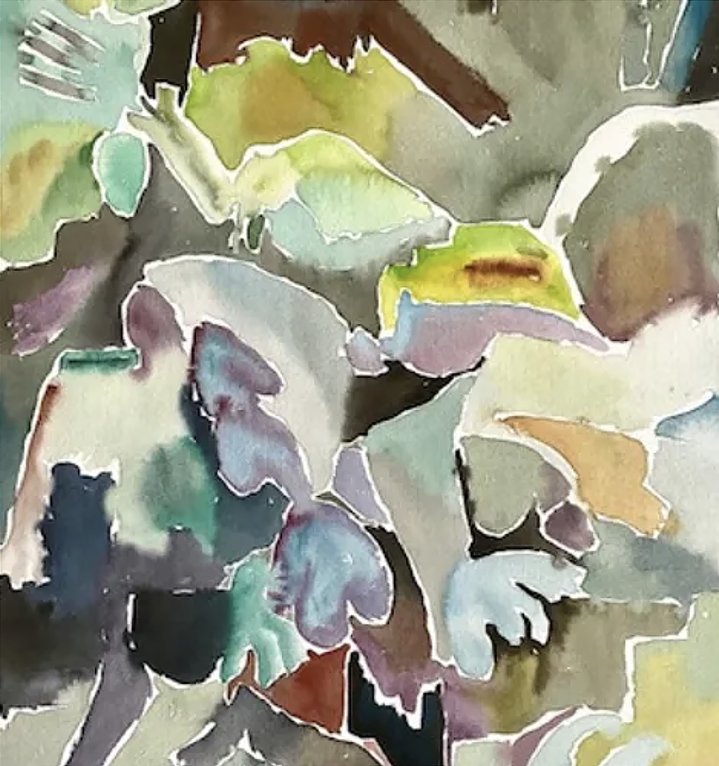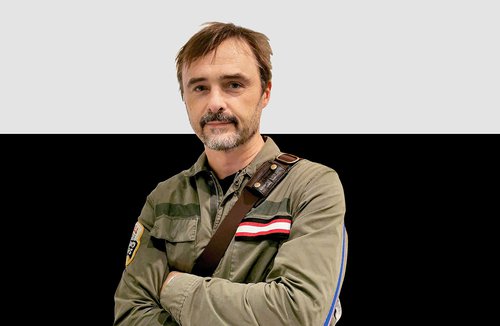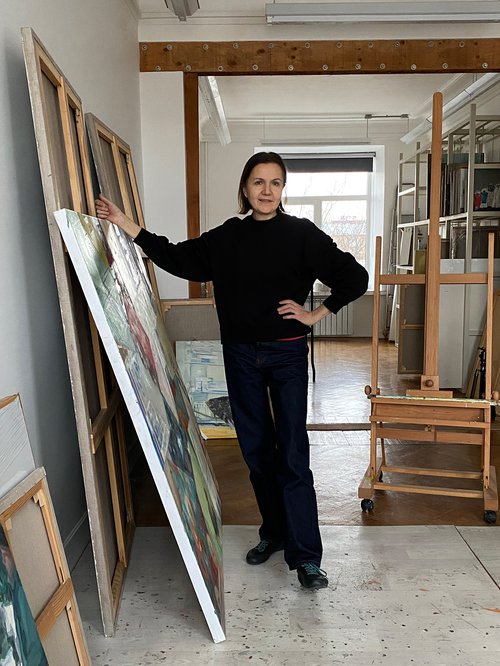Pyotr Kiryusha. Strawberry. Courtesy of MYTH Gallery
Pyotr Kiryusha and his Life in Colours
There are not one but three exhibitions featuring virtuoso watercolours on a grand scale by artist Pyotr Kiryusha in parallel in Venice and its northern cousin, St.Petersburg.
It is all about colour. Russian-Latvian artist Pyotr Kiryusha's (b. 1978) watercolours start and end with colour. Spreading freely across the sheet, colour envelops objects, creates spaces, where it suddenly stops, as if reaching its limit, the boundaries are well defined. The force of the brush or its subtle pressure on the paper is hardly perceptible, but it is the artist’s skill which lies behind the lightness and superficial effects.
Born in Dushanbe, the capital of Soviet Tajikistan, and raised in Latvia, Kiryusha has lived in Moscow for more than a decade where as an artist he has matured. "They say that the happiest are those who fulfil their dreams. When I was a kid I wanted to be an artist, but by the time I was eighteen, I realised how difficult it is to make money from art and thought I should study law. But in the end I didn't become a lawyer", he explains. In 1998 he moved from Riga to Moscow and from 2000 he studied at the Higher School of Graphic Design, then part of the Institute for Contemporary Art Problems, graduating in 2012. Since the start of the pandemic, Kiryusha has spent most of his time in Europe, but he always feels close to the Moscow art community: "In every city in the world there is some kind of electricity in the air. I can live anywhere and become like a local, but as an artist I will remain a Moscow artist for life. When I started my artistic career, I inadvertently became attached to certain things that are specific to Moscow". As a man and artist, Kiryusha is a global nomad. Moving around the world from place to place, wherever he is, he always takes paper and watercolours and paints whatever is around him.
It was in 2006 that Kiryusha felt his career as an artist took off in earnest and within a few years he was already exhibiting. His work has always provoked a strong emotional response, he recalls in particular one of his first curators saying how genuinely happy he felt when looking at Kiryusha’s work and from then till now, he is one among the most in-demand artists of his generation. Today he has a solo exhibition in Venice at the quaintly named Perfume Art Creation gallery, while new paintings and works on paper are included in two shows curated by the Myth Gallery in St Petersburg.
Since the beginning of the 2010s, he has been showing with the Iragui Gallery in Moscow, and over the last few years demand and interest in his work has grown exponentially. The artist noticed that three or four years ago his work was finally became relevant within the close-knit circle of Moscow artists, and this in turn curiously seemed to influence his popularity outside Moscow. With a succession of bans on social activism in Russia, then the pandemic, and now the military confrontation with Ukraine, the importance of intimate and diary-like genres in Russian art has increased dramatically. There has been an unexpected surge in drawing as a means of constantly observing things in the present and many artists have turned to the format of a sheet in a notebook or an album, such as Irina Korina (b.1977), whose works on paper are very close in colour to Kiryusha's work. Contemporaneity and the expression of it has become the main goal of young artists, yet so elusive over the past decade that many artists have now turned to fixing fleeting impressions in their works, hoping perhaps that by randomly combining these, a desired image of the future will emerge, turning the real flow of life through the use of painterly techniques in their work. Whereas artist Igor Samolet (b. 1984) made the screen of a smartphone the basis of his new personal poetics, theatrically adding comments of the people to his news feeds and postings, Pyotr Kiryusha's drawings look more just like simple snapshots reminding us of the flow of life and how the artist is interested in practically everything unfolding around him. Gustave Caillebotte (1848–1894) was the first painter to bring photographic fragmentation into painting, albeit over a century and a half ago. Disciplined, productive diary paintings seem to call for intimate, domestic apartment shows, and Kiryusha often organises exhibitions in his studio.
He also likes to experiment with his materials, simultaneously using acrylic, watercolour and oil pastel in his work, playing around with different combinations and using them in varying proportions. In 2009 he started working with paper on a roll at 1 ½ metres wide scaling up his practice, and since then has been creating impressively large works in a signature technique he has honed and with which he now feels happy. He mixes flour paste with gouache so that the paint becomes transparent and successive layers blend together, as he puts it, "almost on a molecular level". Working on canvas, he can then apply a chalk primer, like a levkas, to paint on it as if on watercolour paper. The artist's transition to a large format also coincided with his reflections on abstraction. In his latest works, the relationship between background and image is arbitrary: gaps in the watercolour are painted in monochrome in acrylic and an enigmatic lacy surface is formed with little glitches, liked by contemporary painters. Reflecting on where he is at in his own practice, the artist says: "Although I walk in circles, I try not to tread in my own footsteps". There is a constant striving to come up with new moves and ways of working.
Today Kiryusha's art, from his watercolor sketches to his large scale paintings, has achieved a recognizable, self-assured plastic language. In terms of the relationship between the figurative and the non-figurative, he can be compared with European artists of the 1950s, who, influenced by American abstraction, gradually disembodied the reality of the landscape and still life, notably Nicolas De Stael (1914–1955) and Victor Pasmore (1908–1988). In the case of Kiryusha the emotional, intense colour of his work evokes nordic and baltic Symbolist and Expressionist painting at the beginning of the 20th century for their similar melding of spirituality and colour. These days with cameras on everyone’s phones, psychedelic brightness and fluorescent glow of colours characterises contemporary painting with all the social media photo processing filters available, but ultimlately it is only the artist's human gaze that can hope to express empathy and affection. As Kiryusha concludes, "Maybe they do not meet the strict terms of contemporary art, but for me technique and craftsmanship win out over ideas”.
Pyotr Kiryusha. My Italian Adventure
Venice, Italy
10 June – 10 September, 2023
Pyotr Kiryusha. Portal
St. Petersburg, Russia
10 June – 15 July, 2023
Focus. Graphics
St. Petersburg, Russia
8 June – 15 August, 2023







